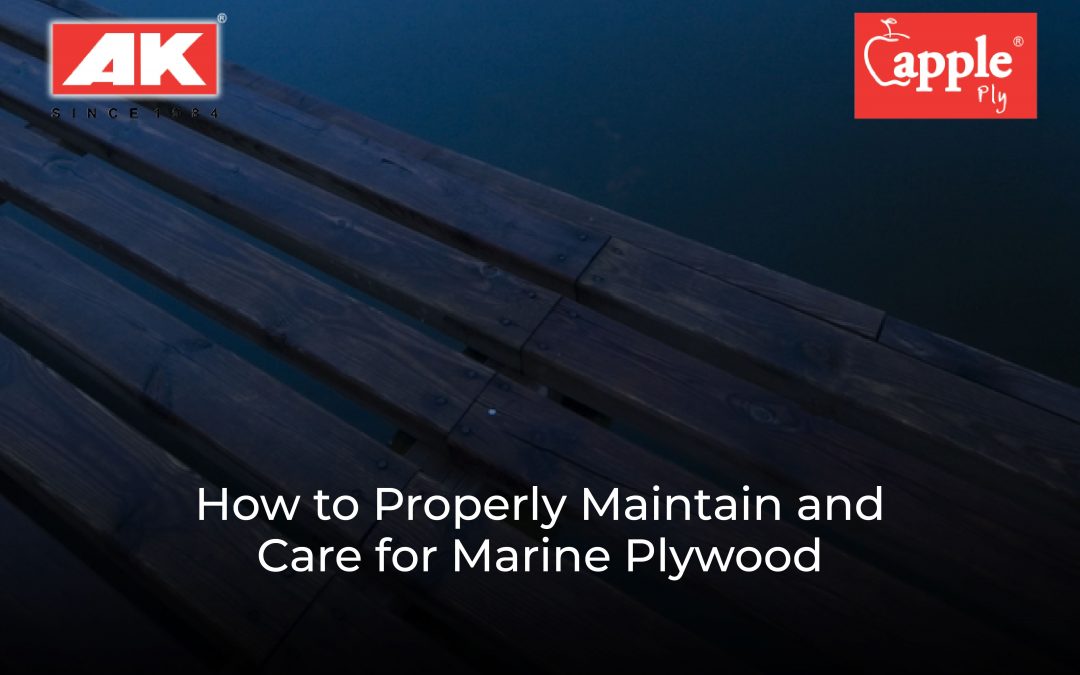Is your marine plywood losing its shine and durability due to exposure to harsh marine conditions? This blog explores the best ways to maintain and care for plywood and how to clean, seal and store it.
Say goodbye to worries and hello to reliable performance.
The Importance of Regularly Cleaning Your Marine Plywood
The first step in maintaining your marine plywood is to keep it clean. Regular cleaning prevents the buildup of dirt, grime, and contaminants, which may damage the surface of the wood over time. Here are the essential ways to maintain marine plywood:
- Gentle washing: Use a soft brush, cloth, and mild detergent to clean the plywood surface. Avoid using hazardous chemicals that could harm the wood or its finish.
- Rinsing thoroughly: Always rinse away all soap residue thoroughly after washing. Leftover soap can discolor the wood and diminish its natural beauty.
- Drying properly: Allow the plywood to dry entirely before performing other maintenance tasks. Moisture can cause mould and mildew to grow, causing damage to the wood.
Sealing the Marine Plywood
Sealing is necessary to improve marine plywood’s water and moisture resistance. To properly seal your water resistance plywood, follow these steps:
- Surface preparation: Before applying the sealant, ensure the plywood surface is clean and dry. Remove existing coatings or finishes to ensure the new sealant adheres appropriately.
- Choosing the suitable sealant: Use marine-grade sealants designed explicitly for plywood. These sealants provide superior resistance to water and UV rays.
- Application: Apply the sealant evenly to the plywood surface with a brush or roller. Follow the manufacturer’s recommendations for the number of coats needed.
- Drying time: Allow sufficient time for the sealant to dry between coats. Two to three coats are usually enough to provide adequate protection.
Properly Storing Marine Plywood
Marine plywood must be properly stored when not in use to avoid damage and ensure its longevity. Inadequate storage can result in warping, bending, or delamination.
Follow the following tips for adequately storing marine plywood:
- Dry environment: Marine plywood should be stored in a dry, well-ventilated area. Avoid damp or humid environments because moisture can harm the wood.
- Flat and elevated: Plywood should be stored flat and elevated off the ground. Avoid placing it directly on concrete or other surfaces that can absorb moisture.
- Covered and protected: If possible, cover the plywood with a waterproof tarp or material to shield it from dust, debris, and direct sunlight.
- Regular inspection: Inspect the plywood regularly for any signs of damage or changes in its condition. Early detection can aid in the prevention of future problems.
Handling and Transportation
Proper handling and transportation of marine plywood are crucial to avoid any unnecessary stress on the wood. Whether you’re moving it from one place to another or installing it on your boat, follow these guidelines:
- Avoid dragging: For protecting water resistance plywood, never drag it across rough surfaces, which can lead to scratches and surface damage.
- Lift with care: Lift the plywood using proper lifting techniques, and avoid bending it excessively.
- Secure during transport: When transporting plywood in a vehicle, ensure it is properly secured to prevent shifting and potential damage.
Best Practices for Long-Term Marine Plywood Maintenance
If you’re planning long-term use of marine plywood (on boats, docks, or outdoor furniture), these extra tips will help:
-
Reapply sealant regularly: Don’t wait until signs of damage appear. Make sealing a scheduled routine.
-
Avoid prolonged direct sunlight: UV rays can break down the wood’s finish. Cover plywood when not in use.
-
Clean spills immediately: Saltwater, fuel, or chemicals can deteriorate the surface if left unchecked.
-
Sand before refinishing: Light sanding before reapplying sealant helps the new coat bond better and smooths out imperfections.
How to Identify Quality Marine Plywood
Before maintenance even begins, it’s important to ensure you’re using high-quality marine plywood. Here’s how you can identify top-grade material:
-
Look for ISI or BS 1088 certification: These ensure the plywood meets marine-grade standards.
-
Check for uniform core layers: Quality plywood has even, void-free layers for strength and durability.
-
Ask about preservative treatment: Plywood treated with antifungal and borer-resistant chemicals lasts much longer in marine conditions.
-
Buy from trusted brands: Always purchase from reputable manufacturers like AK Apple Ply to ensure authenticity.
The Key to Marine Plywood Durability
Maintaining and caring for marine plywood ensures its longevity and optimal performance in marine environments. Regular inspections, sealing, and protection from moisture are crucial for preventing damage and preserving the integrity of the water-resistant plywood.
AK Apple Ply is a leading expert in this field, emphasizing the importance of using high-quality water-resistant plywood. With our commitment to delivering top-notch products and expertise, we offer the best solutions for water-resistant plywood needs, assuring lasting durability and reliability. Visit our website for premium plywood that exceeds expectations.
FAQs
1. How often should marine plywood be sealed?
It’s recommended to reseal plywood every 1–2 years, depending on its exposure to water and UV rays.
2. Can I use regular wood sealant for marine plywood?
No. Always use marine-grade sealants, as they are specially formulated to withstand harsh moisture and sunlight conditions.
3. What’s the best way to remove mold or mildew from marine plywood?
Use a mixture of mild detergent and water with a soft brush. Avoid using bleach or abrasive cleaners that can damage the finish.
4. Can marine plywood be painted after sealing?
Yes, but ensure the sealant is compatible with the paint you plan to use. Always follow the paint manufacturer’s instructions.
5. How can I tell if my marine plywood is damaged?
Look for signs like warping, delamination, or soft spots. These indicate water damage and need prompt attention.




